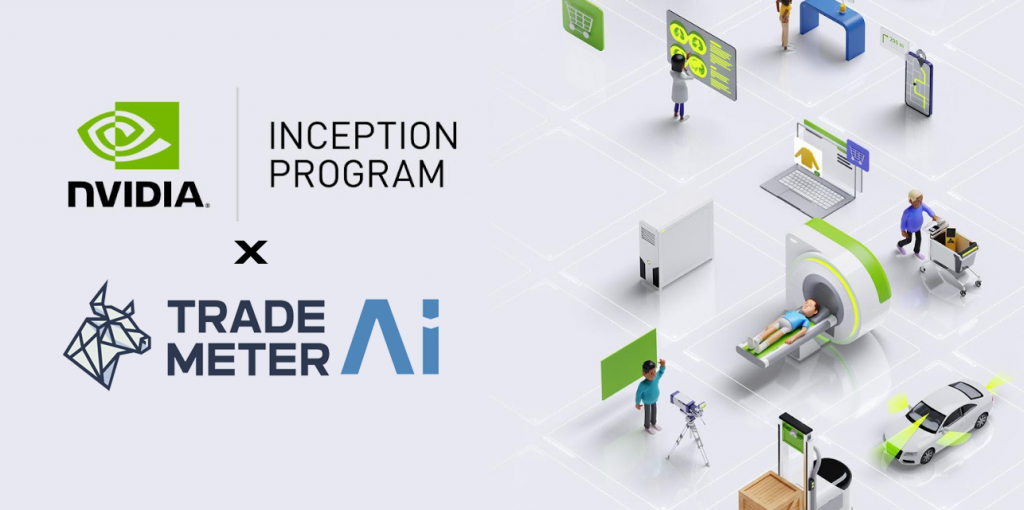20 Free Suggestions For Choosing Free Ai Trading Bot Websites
20 Free Suggestions For Choosing Free Ai Trading Bot Websites
Blog Article
Top 10 Suggestions On How To Evaluate The Quality Of Data And Its Sources For Ai-Powered Stock Analysis And Forecasting Trading Platforms
It is essential to evaluate the quality of data and sources utilized by AI-driven trading platforms as well as stock prediction platforms in order to get precise and reliable information. Insufficient data could lead to inaccurate predictions, losses of money, and a lack of trust. Here are 10 of the top strategies to evaluate the quality of data sources and their reliability.
1. Verify the Data Sources
Verify the source of the data Make sure the platform uses reputable and well-known data suppliers (e.g., Bloomberg, Reuters, Morningstar, or exchanges such as NYSE, NASDAQ).
Transparency. A platform that is transparent should reveal all the sources of its data and keep them updated.
Beware of dependence on one source: Trustworthy platforms combine data from multiple sources to minimize errors and biases.
2. Examine the quality of data
Do you have real-time or delayed data Check if the platform is able to provide actual-time or delayed data. Real-time information is essential to ensure that trading is active. The delayed data is sufficient for long term analysis.
Verify the frequency of updating information (e.g. hourly or minute by minute or even daily).
Accuracy of historical data Make sure that data is uniform and free of irregularities or gaps.
3. Evaluate Data Completeness
Look for missing or incorrect data.
Coverage. Check that your platform is able to offer a range of markets, stocks, and indices that are pertinent to you trading strategy.
Corporate actions: Check if your platform is able to take into account dividends and stock splits as well as mergers and other corporate events.
4. Test Data Accuracy
Cross-verify data: Compare the data from the platform to other trusted sources to ensure consistency.
Look for errors: Search for anomalies, incorrect prices or financial metrics that are not in sync.
Backtesting - Use data from the past for backtesting trading strategies to check if the results match expectations.
5. Consider the Data Granularity
The platform should provide granular details, such as intraday prices, volumes, bid-ask and order book depth.
Financial metrics: See if the platform includes complete financial statements (income statement or balance sheet, cash flow) and key ratios (P/E P/B, ROE, etc. ).
6. Verify that the Data Cleaning is in place and Preprocessing
Data normalization - Ensure your platform is able to normalize your data (e.g. adjusts for dividends or splits). This will ensure the consistency.
Handling outliers (handling anomalies): Verify that the platform is able to handle outliers and anomalies.
Missing estimation of data: Ensure that the platform is based on reliable methods to fill the gaps in data.
7. Verify data consistency
Data alignment to the correct time zone. To prevent discrepancies ensure that all data is in sync with one another.
Format consistency - Check to see whether the data is presented in the same way (e.g. units or currency).
Check for consistency across markets: Check for consistency from different exchanges and/or markets.
8. Relevance of Data
Relevance in trading strategy. Check that the information is in line with your trading style.
Check the features of the platform.
Verify the security and integrity of data
Data encryption: Make sure the platform is using encryption for data transmission and storage.
Tamperproofing: Check that the data isn't altered or altered.
Compliance: Check whether the platform is compliant with regulations on data protection (e.g. CCPA, GDPR).
10. Check out the AI model on the platform transparency
Explainability: The platform must provide insights into how AI models use data to make predictions.
Bias detection: Determine that the platform monitors and reduces biases within the models or data.
Performance metrics: Evaluate the quality of the platform by evaluating its history, performance metrics and recall metrics (e.g. precision and accuracy).
Bonus Tips
User reviews and reputation User reviews and feedback to determine the reliability of the platform and its data quality.
Trial time. You can try a free demo or trial to try out the platform and its features.
Support for customers: Ensure that the platform offers a solid assistance for issues related to data.
Following these tips will enable you to evaluate the data quality, the sources, and the accuracy of AI-based stock prediction tools. View the top see page about chatgpt copyright for site tips including copyright financial advisor, best stock analysis website, investing ai, ai investment platform, incite, best stock analysis website, best stock analysis app, stock market software, ai invest, best ai trading app and more.
Top 10 Tips To Evaluate The Speed And Latency Of Ai Stock Prediction/Analyzing Trading Platforms
The speed and the latency of a trading platform are important factors to be considered, especially for active traders or high-frequency investors, as well as algorithmic ones. A delay of just milliseconds can affect profitability and trade execution. Here are ten of the most effective methods to gauge the speed and the latency of platforms.
1. Real-time data feeds to be analyzed
Data delivery time: The platform should provide real-time, accurate information within an extremely short time (e.g. with sub-millisecond delay).
Check the data source's proximity to the major exchanges.
Data compression: Check whether your platform uses effective data compression techniques in order to accelerate the delivery of data.
2. Time to test trade execution
Order processing speed How fast the platform executes and processes trades following your submission of an order.
Direct Market Access: Confirm that the platform you are using offers DMA. DMA is a feature which allows you to transfer orders directly to exchanges and without intermediaries.
Execution Reports: Check if your platform has complete reports on the completion of orders, as well as timestamps.
3. Assess the Platform Response
Speed of the user interface (UI) Test how fast the user interface of the platform responds to your inputs.
Chart updates Verify whether charts and visualizations are updated in real-time update without lag.
Mobile app performance. When you use an app designed for mobile, you should ensure it is performing as quickly and smoothly as a desktop application.
4. Check for Low Latency Infrastructure
Server Locations: Check that the platform has servers that have low latency, located close to major financial exchanges or hubs.
Co-location: If the exchange provides co-location, you can host your trading algorithm on servers that are near the exchange.
High-speed Networks: Check the platform's use of high-speed, fiber-optic network or other technologies with low latency.
5. Test simulation speed and backtesting
Processing of historical data: See how fast the platform analyzes and processes the historical data to backtest.
Simulation latency: Make sure the platform can simulate trades in real-time with no noticeable delays.
Parallel processing: Make sure your platform supports parallel processing or distributed computing, which speeds the process of complex calculations.
6. Assess the API Latency
API response times: Find out how quickly APIs respond to queries (e.g., fetching data from the platform, or placing orders).
Rate limits: Make sure that the API has reasonable limits on rates in order to avoid delays when high-frequency trading takes place.
WebSocket support - Check to see if your device is running WebSocket protocol for low-latency, real-time data streaming.
7. Test Platform Stability Under load
High-volume trading: Create high-volume trading scenarios to assess whether the platform is stable and responsive.
Market volatility Test the platform during periods of high market volatility to make sure that it can handle sudden price changes.
Test your strategies for stress: See if the platform offers tools to test your strategies in extreme circumstances.
8. Examine network and connectivity
Internet speed requirements. Check that your internet connection is speedy enough to meet the speed recommended by the platform for the best performance.
Reliable connections: Make sure that the platform supports redundant internet connections in order to avoid downtime.
VPN latency: If you are using a VPN check whether it has a significant amount of latency, and if the service has alternatives.
9. Check for Speed Optimisation Features
Pre-trade Analyses: Check whether the platform offers the pre-trade analysis in order to maximize execution speed and order processing.
Smart order route (SOR) The first step is to see whether SOR is used by the platform in order to determine the fastest and most cost-effective execution locations.
Latency monitoring: Check whether the platform provides tools for monitoring and analyzing the speed of latency in real time.
Review User Feedback Benchmarks
User reviews: Review user feedback in order to determine the platform's performance in terms of speed and latency.
Third-party benchmarks: Seek out independent benchmarks or reviews comparing the speed of the platform to other platforms.
Case studies and testimonials Find out whether there are case studies that demonstrate the low-latency capabilities of the platform.
Bonus Tips:
Free trial period: Try the platform's speed and latency in real-world scenarios using a demo or free trial.
Customer Support: Check whether the platform offers assistance with issues related to latency, or optimization.
Hardware requirements: Check whether the platform requires special hardware (e.g. high-performance computers) to operate at its maximum speed.
If you follow these guidelines to evaluate the performance and speed of AI platform for predicting or analyzing stocks, ensuring you choose a platform that meets the requirements of your trading and eliminates delays. Low latency can be crucial for traders who trade high-frequency, or algorithmically where even small delays could affect their performance. Read the top rated copyright financial advisor advice for site info including chart analysis ai, trader ai intal, ai investment platform, stock ai, chart analysis ai, ai for trading, best ai etf, incite, ai investment advisor, best stock advisor and more.